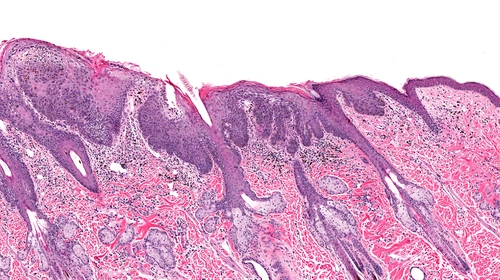ICD-10: Perfect Your Eye Care Coding with 5 Expert Tips

Pinpoint specifics with new diagnosis code options for ophthalmology. The new ICD-10 code choices for eye care have been out since Oct. 1. Even if your practice is already using them, it's a good time to check in and confirm that you're assigning them correctly. Check out the following tips that Rhonda Buckholtz, CPC, CPCI, CPMA, CDEO, CRC, CHPSE, COPC, CENTC, CPEDC, CGSC, vice president of strategic development for Eye Care Leaders, offered during the Sept. 13 Eye Care Leaders webinar, "Solving Ophthalmology Coding Conundrums." 1. Avoid Defaulting to Unspecified Code for Visual Loss As most eye care coders are aware, new codes in the 2018 edition of ICD-10 apply when a patient has blindness and/or low vision in both eyes, allowing you to denote whether the left eye condition is of a different category than the right eye condition. The guidelines for blindness now state that "If blindness or low vision of both eyes is documented, but the visual impairment category is not documented, assign code H54.3, which is unqualified visual loss both eyes," advised Buckholtz. If blindness or low vision in one eye is documented but the visual impairment category is not documented, you'll assign a code from H54.6-, which is unqualified visual loss, one eye, she said. If blindness or visual loss is documented without any information about whether one or both eyes are affected, the manual does offer an unspecified visual loss code, which is H54.7 (Unspecified visual loss), "but I would strongly discourage you from ever defaulting to that code, because you know we have problems with unspecified codes and payer policies," Buckholtz said. Payers will expect eye care practices to have enough detail documented to be able to avoid the unspecified code. 2. You Won't The Find H42 Excludes2 Note Under H42 (Glaucoma in diseases classified elsewhere), the ICD-10 manual has deleted the previous Excludes2 note that was listed under the code heading. "Instead, they made an instructional note for appropriate sequencing," Buckholtz advised. "If you remember correctly, Excludes2 means if two conditions exist together, you can't code them together, if applicable. If you see an Excludes1 note, that's when it says never ever, they can't be coded together." You'll now find an instructional note following H42, which states, "Code first underlying condition, such as: amyloidosis (E85.-), aniridia (Q13.1) ..." and the list goes on to include other codes that should be coded before H42. 3. Laterality Is Imperative Since Oct. 1, you've had dozens of new codes to choose from in the degenerative myopia (H44.2) category, now requiring you to have very specific information about the type of myopia that the patient has. The codes are broken down by laterality, so you must ensure you have documentation of the affected eye. "You'll see there are codes for the right side, left side, and bilateral, as well as the unspecified code," Buckholtz said. "Make sure you never use the unspecified code. Payers want that level of detail, so make sure you have the laterality documented so you never have to use the unspecified code for laterality. We use unspecified codes for other reasons, but don't use it for laterality." To select the right code, you'll select the appropriate degenerative myopia and associated conditions codes based on the type of myopia, which is degenerative, as well as any associated complications or manifestations. For instance, you'll find the following options: You'll then add the appropriate sixth character based on the affected eye, such as right eye (sixth character 1), left eye (sixth character 2), bilateral eye (sixth character 3), or unspecified eye (sixth character 9). 4. Keep MIPS, MACRA, And Other Platforms in Mind Although it can be tempting to slack on specificity when reporting ICD-10 codes, remember that they don't just prove medical necessity, but they also help you with other benefits. "When you're coding ICD-10-CM, you want to code to the highest level of specificity that's absolutely »» » possible," Buckholtz said. "The reason you want to do that is, you've seen all the options for quality reporting, meaningful use, MIPS, MACRA, it can be a little mind blowing at times. And our diagnosis coding on our claims can be a first line of defense for reporting for payers and others to be able to extract the right data from us." In addition, she advises, ensure that you're capturing any comorbid conditions. "If the patient has any chronic conditions that impact your decision-making process at all or your treatment plan, you want to make sure you report those as secondary conditions. Remember that this helps demonstrate the severity of your patients. If you truly are seeing the sickest patients you want to make sure you justify it by listing the chronic conditions on your claim form." 5. Update Your Templates If your documentation templates were centered around the 2017 ICD-10 codes, now is the time to update themfor the 2018 series. "I strongly encourage everyone to use standardized documentation concepts," Buckholtz said. For certain codes, you'll need to maintain a template with documentation concepts on it. "You have type, severity, complications, manifestations, and laterality, as well as the anatomical location," Buckholtz said. "As long as you template those into your medical record, you'll find out it will help support all documentation to reach the complexity of the ICD-10 codes and helps you with medical necessity, documentation, compliance, and a lot of the CPT® initiatives as well. Keep those in mind whenever you're looking to set up your template, whether in an electronic health record or paper records."




